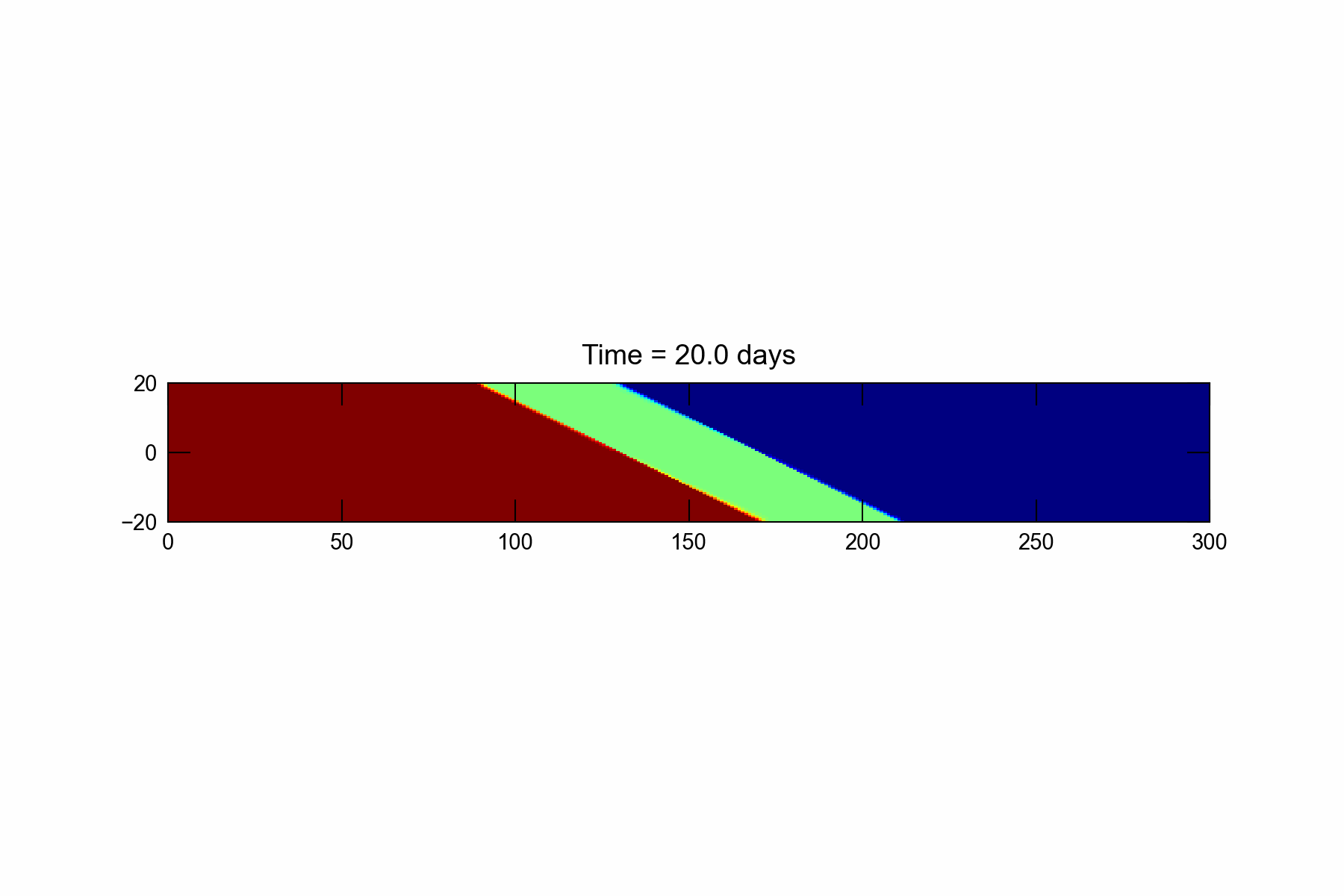53. Rotating Interface Problem
The rotating interface problem was suggested by (Bakker et al., 2004) as a benchmark test for variable-density groundwater flow models. The problem consists of a box filled with three immiscible fluids that are separated by sharp interfaces. The fluid are initially in an unstable configuration that causes them to rotate. This rotating interface problem was simulated by (Langevin et al., 2003) using the MODFLOW-based SEAWAT-2000 program. (Bakker et al., 2004) also shows simulation results for the SWI Package for MODFLOW, MOCDENS3D, and for SEAWAT. There are two cases of this problem, one for symmetric rotational flow and one for asymmetric rotational flow. (Bakker et al., 2004) and (Langevin et al., 2003) show both the symmetric and asymmetric versions of the rotating interface problem; however, only the symmetric case is shown here.
53.1. Example description
The problem consists of a cross-sectional box filled with three fluids of different densities (Figure 53.1). The initial boundaries between the fluids are not horizontal, and thus, the fluids rotate. (Bakker et al., 2004) and (Langevin et al., 2003) compared simulated velocities at the onset of rotation with velocities obtained using an analytical solution. This same comparison with simulated velocities is also shown here for MODFLOW 6.
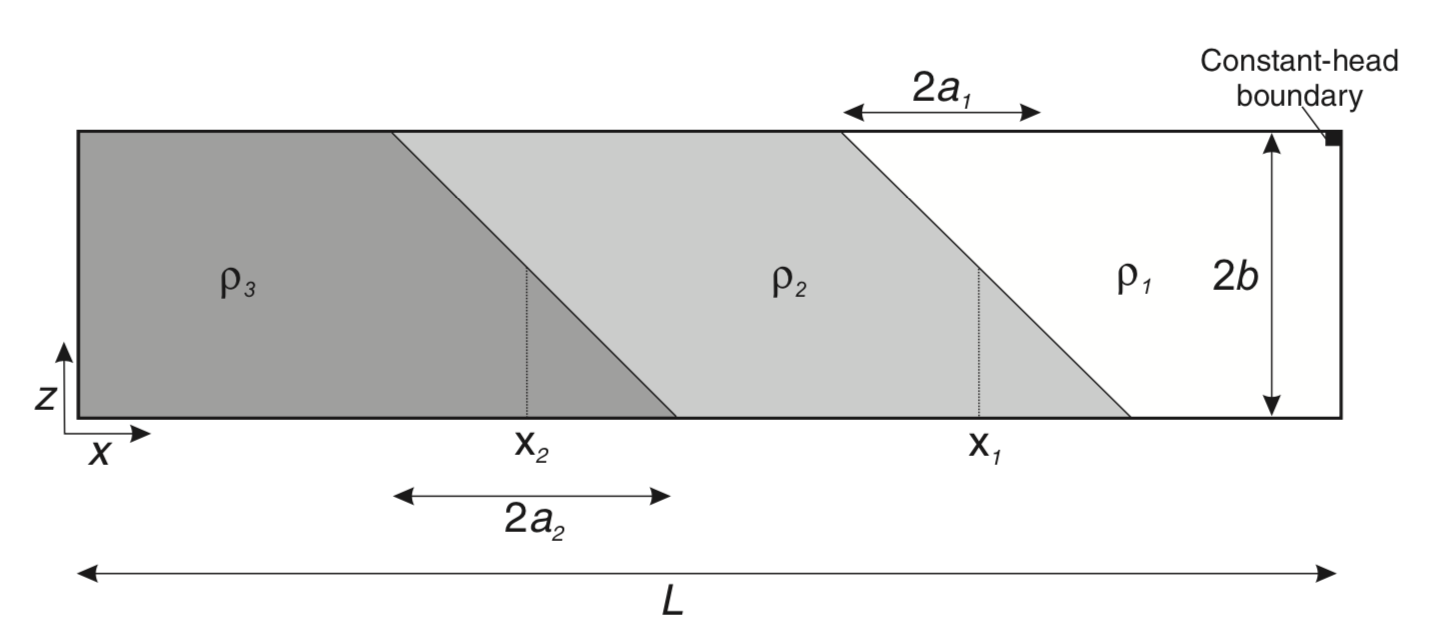
Figure 53.1 Configuration and variable definition for the rotating interface problem. From (Bakker et al., 2004) and (Langevin et al., 2003). Note that the constant-head boundary is not needed for the MODFLOW 6 simulation.
Model parameters used for the MODFLOW 6 simulation of the rotating interface problem are shown in Table 53.1 The model grid and initial conditions used for the MODFLOW 6 simulation are shown in Figure 53.2. The model grid consists of 300 columns and 80 layers. The interfaces between the three fluids are straight and slope down and to the right. The aquifer and fluids are assumed to be incompressible, and the effects of concentration on fluid viscosity are assumed to be negligible. The freshwater hydraulic conductivity is homogeneous and isotropic. Symmetric rotational flow results when the density for the middle fluid (zone 2) is set as the average of the two outer fluids (zone 1 and 3). Although a constant-head condition can be applied to help with convergence for this problem, it was not required for this MODFLOW 6 simulation. The MODFLOW 6 model was run for 10,000 days divided into 1000 timesteps.
Parameter |
Value |
|---|---|
Number of periods |
1 |
Number of time steps |
1000 |
Simulation time length (\(d\)) |
10000 |
Length of box (\(m\)) |
300 |
Height of box (\(m\)) |
40.0 |
Number of layers |
80 |
Number of rows |
1 |
Number of columns |
300 |
Length of system (\(m\)) |
150.0 |
Column width (\(m\)) |
1.0 |
Row width (\(m\)) |
1.0 |
Layer thickness |
0.5 |
Top of the model (\(m\)) |
height / 2 |
Hydraulic conductivity (\(m d^{-1}\)) |
2.0 |
Reference density |
1000.0 |
Density and concentration slope |
0.7 |
Density of zone 1 (\(kg m^3\)) |
1000.0 |
Density of zone 2 (\(kg m^3\)) |
1012.5 |
Density of zone 3 (\(kg m^3\)) |
1025.0 |
Concentration of zone 1 (\(kg m^3\)) |
0.0 |
Concentration of zone 2 (\(kg m^3\)) |
17.5 |
Concentration of zone 3 (\(kg m^3\)) |
35 |
Interface extent for zone 1 and 2 |
40.0 |
Interface extent for zone 2 and 3 |
40.0 |
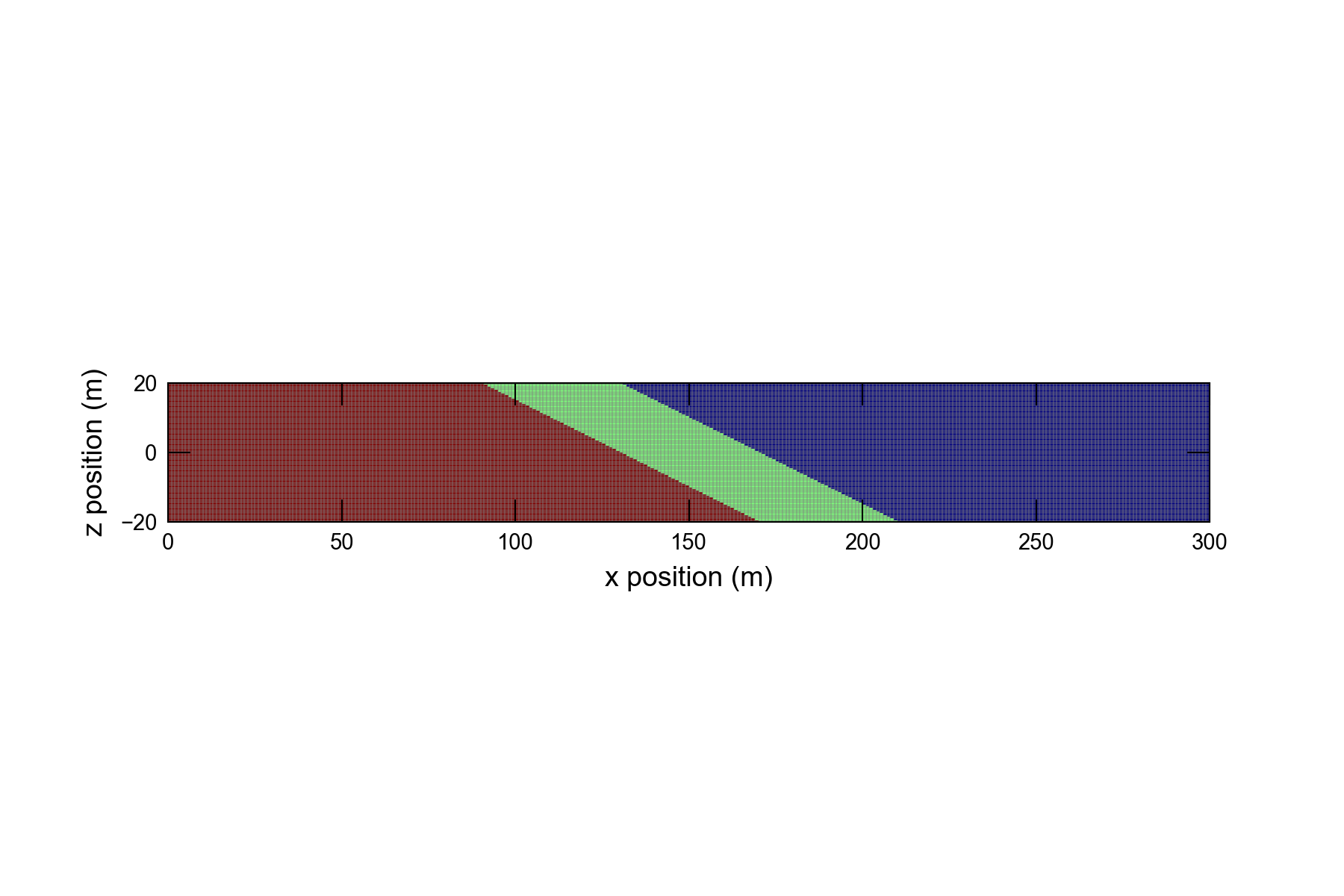
Figure 53.2 Model grid and initial conditions used for the rotating interface problem. Colors represent three different water types.
53.2. Example Results
The rotating interface problem represents a complex variable-density flow system that results from an unstable initial density configuration. The analytical solution of (Bakker et al., 2004) is used here to calculate the horizontal interface velocity as a function of z for the left interface (Figure 53.3). Also shown on Figure 53.3 is the horizontal interface velocity as simulated by MODFLOW 6.
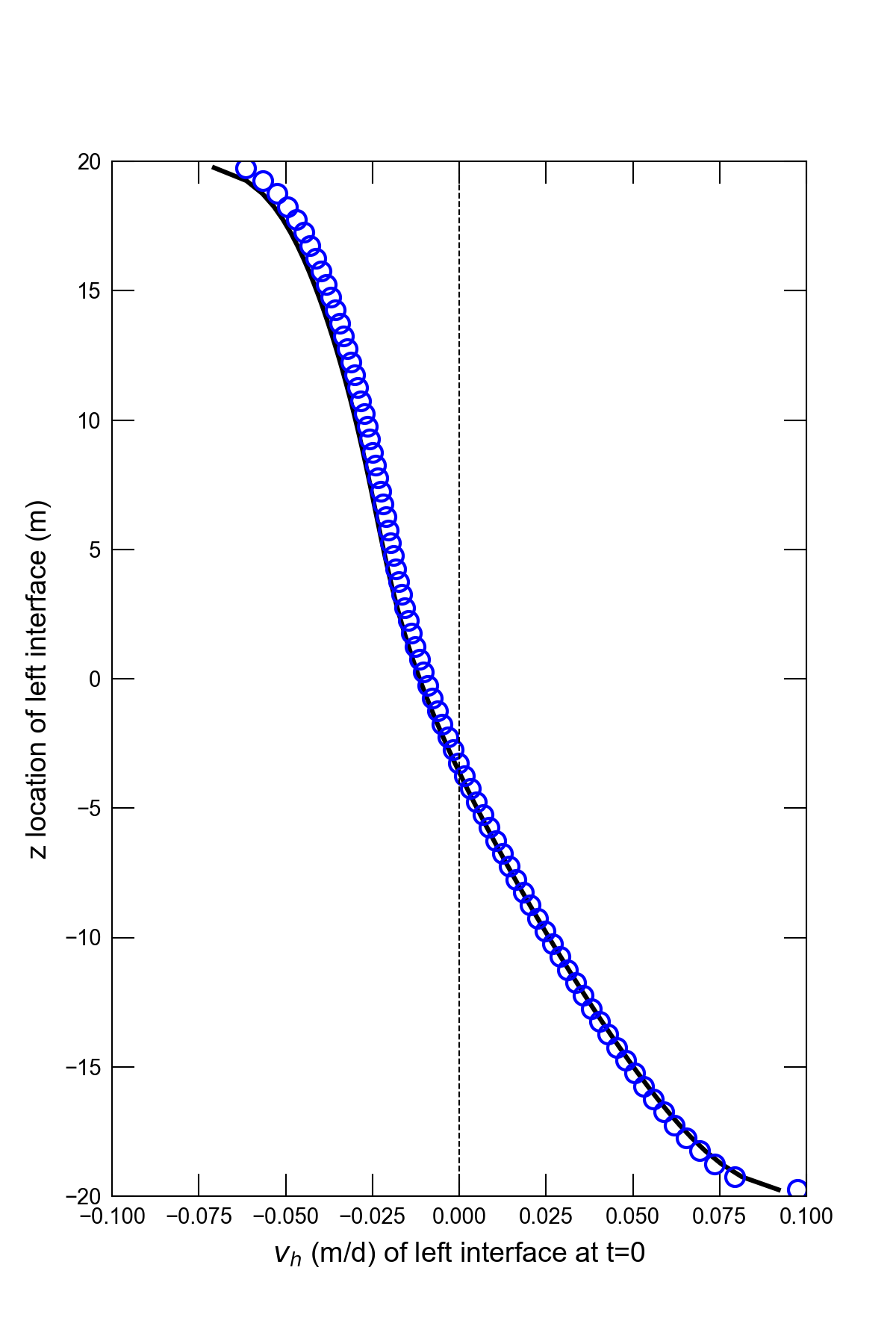
Figure 53.3 Initial horizontal velocity versus vertical position of the left interface, exact (solid), and MODFLOW 6 (blue circles).
During the simulation period, the fluid rotate toward a stable position with lighter water overlying denser water. Although the problem dictates that the fluids are immiscible, the MODFLOW 6 simulation shows some mixing caused by numerical dispersion.
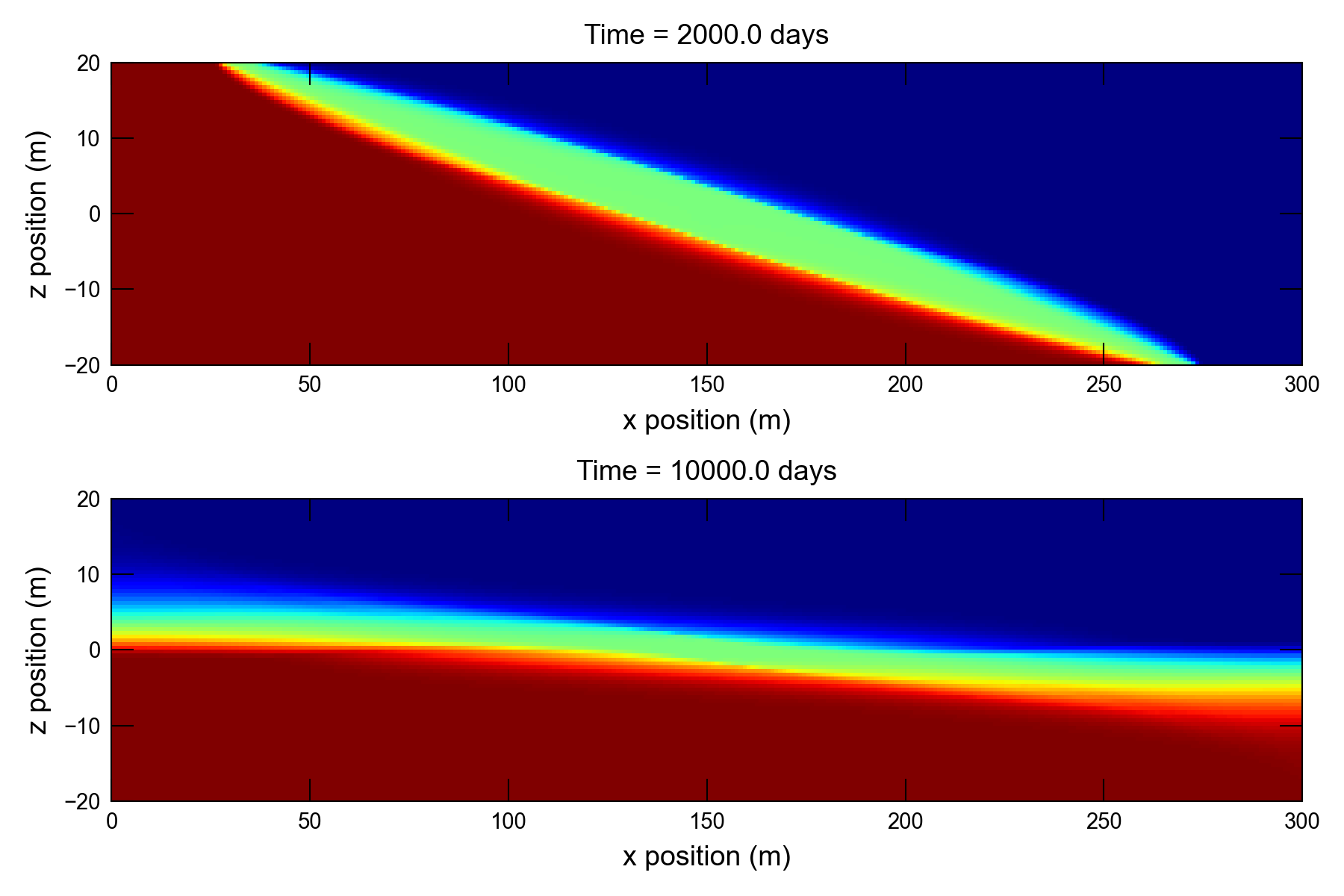
Figure 53.4 Color-shaded plots of concentration simulated by MODFLOW 6 for the (Bakker et al., 2004) problem involving rotating interfaces.
53.3. References Cited
Bakker, M., Oude Essink, G. H. P., & Langevin, C. D. (2004). The rotating movement of three immiscible fluids—a benchmark problem. Journal of Hydrology, 287(1), 270–278. https://doi.org/10.1016/j.jhydrol.2003.10.007
Langevin, C. D., Shoemaker, W. B., & Guo, W. (2003). MODFLOW-2000 the u.s. Geological survey modular ground-water model–documentation of the SEAWAT-2000 version with the Variable-Density Flow Process (VDF) and the Integrated MT3DMS Transport Process (IMT). U.S. Geological Survey. Retrieved from https://pubs.er.usgs.gov/publication/ofr03426
53.4. Animation
Animation of model results:
